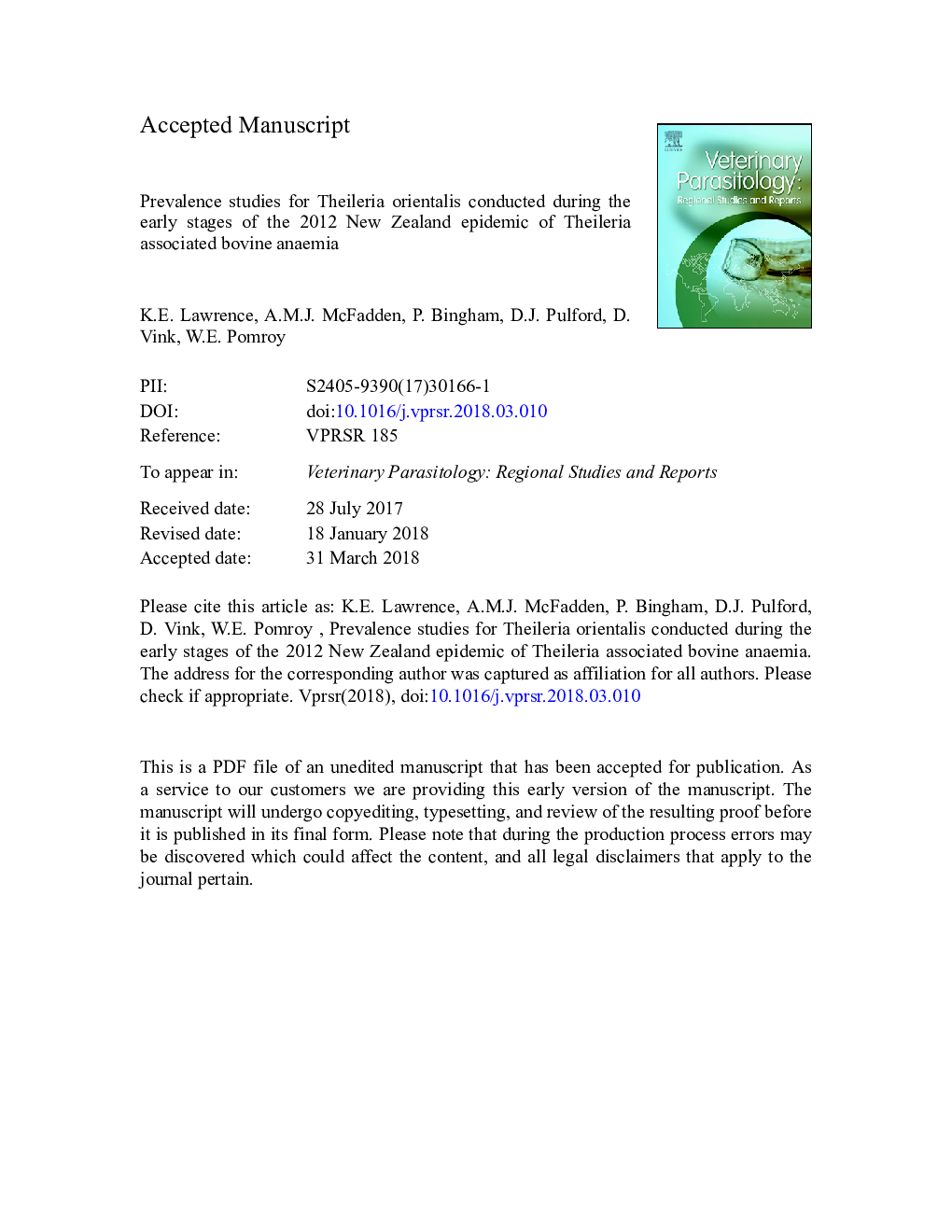| Article ID | Journal | Published Year | Pages | File Type |
|---|---|---|---|---|
| 8506241 | Veterinary Parasitology: Regional Studies and Reports | 2018 | 27 Pages |
Abstract
The results showed that for the index cases, the average haematocritâ¯=â¯0.10â¯L/L and the average piroplasm countâ¯=â¯10.9 Theileria infected RBCs per 1000 RBCs, and for the herd prevalence studies the average haematocritâ¯=â¯0.26 and the average piroplasm countâ¯=â¯6.9. The average herd prevalence of T. orientalis (Ikeda) PCR positive cattle and of anaemic cattle was 87% and 26% respectively. For dairy herds (nâ¯=â¯7 herds) it took, on average, 80â¯days for the within herd prevalence of anaemia to return to zero after the initial diagnosis. In conclusion the prevalence studies showed that infection rates and anaemia rates were already high in herds when the index case of TABA was observed. At the time, these prevalence studies significantly added to our understanding of the epidemiology of the evolving T. orientalis (Ikeda) epidemic and furthermore met the New Zealand MPI objective of being rapid and applied, fit for purpose and completed at a relatively low cost.
Related Topics
Health Sciences
Veterinary Science and Veterinary Medicine
Veterinary Science
Authors
K.E. Lawrence, A.M.J. McFadden, P. Bingham, D.J. Pulford, W.D. Vink, W.E. Pomroy,
